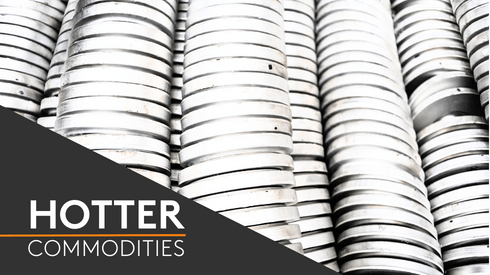Novonix signed a binding offtake agreement with automaker Stellantis on November 11. Under the agreement, Novonix will supply Stellantis’ cell manufacturing partners in North America with a minimum of 86,250 tonnes of a high-performance synthetic graphite material from its Riverside facility in Chattanooga, Tennessee, over six years, starting in 2026.
The agreement with Stellantis is significant not only in its size but also because it is on the original equipment manufacturer (OEM) level, according to Burns.
“OEMs are recognizing the significance of graphite in their supply chain and the desire to localize it and not be fully reliant on Chinese supply. And they are reaching past their cell manufacturing partners upstream,” the CEO said.
OEMs have been aiming to diversify their supply chains and secure volumes they will need because domestic production of graphite is expected to be limited, he added.
“You will certainly see continued focus on [securing North American supply] from the OEMs because they understand [the need] and can take a very long-term view,” Burns said.
This move to secure and diversify supply chains was spurred by OEMs’ own decarbonization goals and their forecast demand for their vehicle sales, he added.
Novonix’s deal with Stellantis follows a similar binding offtake supply agreement with Panasonic in February, under which Novonix will supply the EV battery producer with at least 10,000 tonnes of anode material from its Riverside facility from 2025 to 2028.
Other battery raw materials producers have recently made deals with OEMs. In October, Lithium Americas entered into a $625-million investment agreement with US automaker General Motors (GM) for North America-sourced lithium supply.
Uphill battle in securing US supply chains
In November 2023, Novonix announced it finalized its $100 million grant award from the Department of Energy (DOE) to expand its domestic production of synthetic graphite anode materials at its Riverside facility.
This April, the company was also elected by the DOE to receive $103 million in tax credit refunds under the Qualifying Advanced Energy Project Credit (48C).
Novonix has experienced great benefits from these stimuli through the Bipartisan Infrastructure Law (BIL) and the Inflation Reduction Act (IRA) as well as indirectly, as these have supported the whole industry, from the vehicle and consumer level to the cell manufacturer level, according to Burns.
“All of those [incentives] have helped push the industry to its tipping point, where it is ready to take off and build some amount of internally reliant domestic supply,” he told Fastmarkets.
The US graphite industry is fighting two uphill battles, Burns said:
- It is competing against an established supply chain from China that is years ahead, while the US industry still carries the inefficiencies of a nascent industry
- Competition with China, the biggest producer of synthetic graphite, is on an unlevel playing field as the Chinese government continues to support its industry with state subsidies and operates on lower cost because it does not heed the Western environmental, social and governance (ESG) practices
The US needs to overcome these two challenges as it builds its industry, and this can be achieved through government policies, whether through injecting capital into the domestic industry, adjusting the price of imported material through tariffs, or, as it has been until now, a mix of them, Burns said.
“Although government policies may shift within the energy sector, we are confident that supporting energy independence and domestic manufacturing will remain a priority,” the CEO said.
“Support for domestic critical minerals production remains a bipartisan priority, and although the mechanisms of support may change — tariffs rather than direct investments, for instance — the goal remains unchanged: building a domestic supply chain, decoupling from China, and strengthening US energy independence,” he added.
Resilience in graphite market
The development of different battery chemistries – such as silicon-based and solid-state batteries, neither of which use graphite – will augment the growth and need for new materials, but they will not take away the market opportunity for graphite sales, according to Burns.
“[The graphite market] is going to continue to grow,” he said.
To limit global warming to 1.5 degrees Celsius, the International Energy Agency (IEA) estimates that demand for graphite will increase by four times by 2040, “propelled by the substantial increase in battery deployment for EVs and grid storage.”
Novonix is on track to achieving the first commissioning of its Riverdale facility in the first half of 2025; delivery to Panasonic is targeted to begin in late 2025 and to Stellantis on January 1, 2026, with total output set to reach 20,000 tonnes per year.
The company will build a new greenfield site with an initial capacity of 30,000 tonnes and the ability to expand into 75,000 tonnes and continue to work with existing customers as well as develop new ones.
Want to find out more about our critical minerals price data, forecasts and market insights? Our expert editorial team, analysts and price reporters working across metals, battery raw materials and rare earths bring you the latest price trends, market insights and forecasts for the critical minerals market. Read more here.






